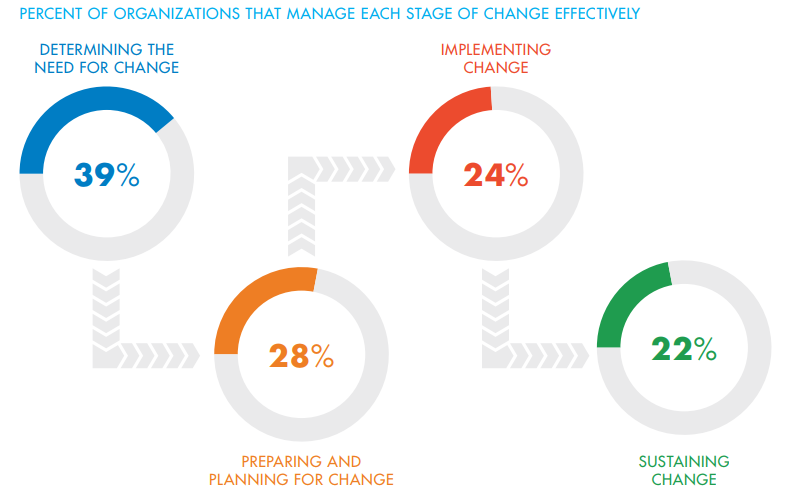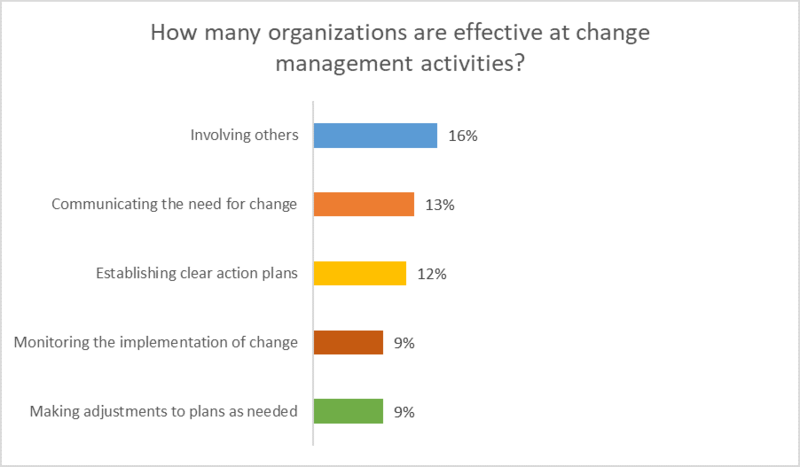ATD Blog
Leading Change
Thu Jul 09 2020

If you can’t lead change, you can’t be a leader. It’s as simple as that. It is not an exaggeration to say that leaders at all levels must be able to effectively navigate change. But even though change is a fact of organizational life, the frequency and size of change is something that leaders are struggling with.
In our recent People Trends survey, we polled more than 300 HR professionals about various topics, including leaders’ common pitfalls. We found that the largest gap between organizational need and leadership performance was change management, with the need far outweighing the capability. Just 21 percent of leaders are managing change successfully. This low level of effectiveness in change management presents a significant challenge for organizations that are operating in a much more VUCA (volatile, uncertain, complex, and ambiguous) environment.
The process for managing change can be broken down into four broad stages, starting with determining the need for change and ending with sustaining change. As organizations move through the four stages, our research shows that their effectiveness begins to deteriorate, and they don’t start with a high level of performance to begin with.

Leaders are at their best when determining the need for change, but still only 39 percent are effective in this area. Greater challenges then follow with planning, implementing, and sustaining change. Difficulties in determining the need for change results in organizations not recognizing challenges or attempting to solve the wrong ones. When you can’t get the first step right, those that follow are a waste of time and energy.
Our survey also examined leaders’ effectiveness in specific activities necessary to manage change. Respondents indicated that for leaders to improve their ability to manage change they should focus on:
Involving Others: Many leaders fail to engage others in identifying and solving challenges.
Communicating More: Communicating the need for change and answering the inevitable question, “Why?”
Establishing Clarity: Setting clear plans of action and accountability.
Monitoring Implementation: Paying closer attention to the implementation of change and tackling any disagreements that occur.
Adjusting: Plans often change, so effective leaders must be able to stay adaptable.

From the results above, we see that most organizations and most leaders are not that effective at managing change. And their efforts break down in multiple areas. Yet these are not insurmountable gaps. Through more frequent engagement and purposeful communication by those leading change, many of these can be resolved. This is leadership.
You've Reached ATD Member-only Content
Become an ATD member to continue
Already a member?Sign In
